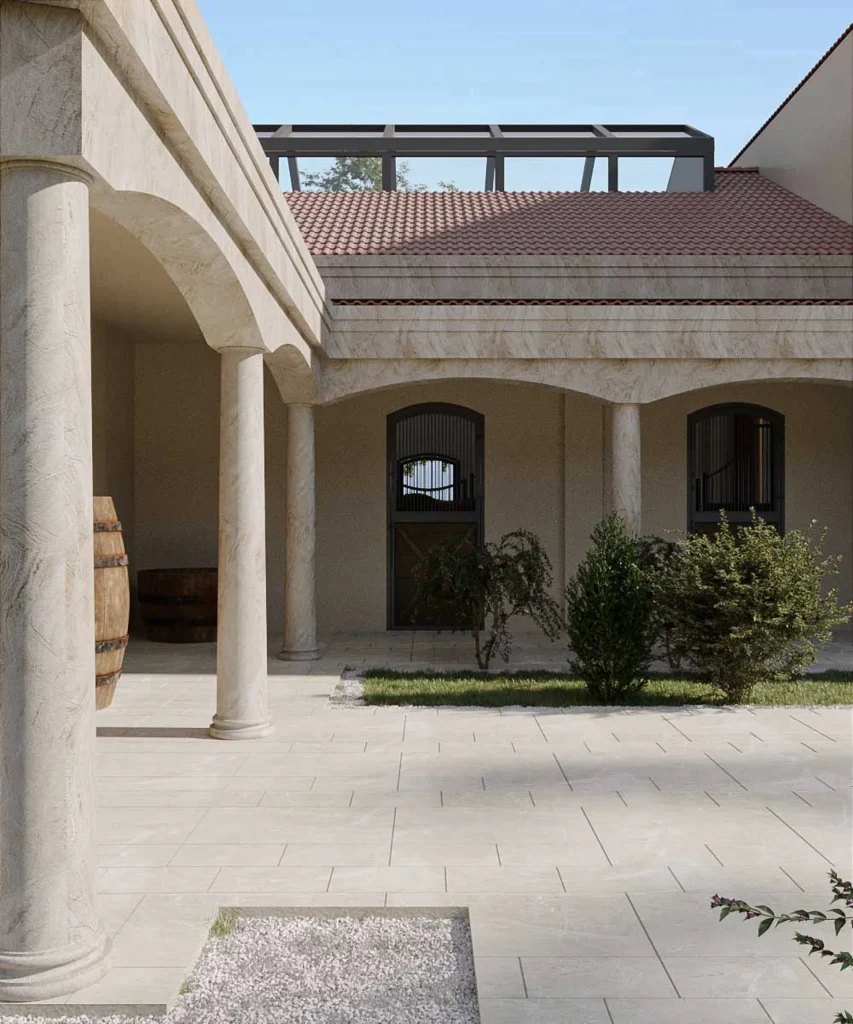Horse Landscape Design
Horse Landscape Design, Equine landscape design aims to create aesthetically pleasing and functional spaces that meet the natural living needs of horses. This design process not only ensures the physical and psychological health of horses but also provides an enjoyable environment for owners and visitors. Let’s delve into the details of equine landscape design and examine the key elements to consider in this process.
1. Natural Living Spaces
Pastures and Meadows
Healthy pastures and meadows are essential for horses to live a healthy life. These areas provide expansive green spaces where horses can exhibit natural behaviors, run, play, and graze.
- Plant Diversity: A variety of plant species in the pastures helps horses maintain a balanced diet. Grasses, clover, and thyme are some plants that meet horses’ nutritional needs.
- Soil Management: Regular soil maintenance prevents erosion and ensures the vegetation remains healthy. Fertilization and irrigation methods increase soil fertility.
Shelters and Shade
Shelters and shaded areas are essential for horses to cool down during hot summer days and stay protected during rainy weather.
- Natural Shelters: Natural shelters created with trees, shrubs, and plants help horses feel like they are in their natural environment.
- Artificial Shelters: Shelters and shade structures made from wood or metal provide protection for horses in all weather conditions.
2. Water Sources and Irrigation Systems
Natural Water Sources
Natural water sources like ponds, streams, and rivers provide a constant supply of clean water for horses. These sources meet horses’ water needs and enhance the aesthetic value of the landscape.
- Ponds and Pools: Ponds and pools serve as both water sources and visual elements in the landscape. These water sources should be regularly cleaned and maintained.
- Streams and Rivers: Streams and rivers naturally meet horses’ water needs and add a natural appearance to the landscape.
Artificial Irrigation Systems
Artificial irrigation systems ensure pastures and meadows remain green and healthy. Automatic irrigation systems provide an efficient way to water the landscape while conserving water.
- Sprinkler Systems: Sprinkler systems ensure even and regular watering of pastures.
- Drip Irrigation: Drip irrigation systems deliver water directly to the roots of plants, conserving water and maintaining plant health.
3. Pathways and Fencing Systems
Safe and Comfortable Pathways
Horse Landscape Design, Safe and comfortable pathways allow horses and people to move freely. These pathways enable horses to move naturally while allowing owners and visitors to walk around easily.
- Natural Pathways: Pathways made from natural materials like stone, gravel, or wood maintain the natural look of the landscape.
- Paved Pathways: Paved pathways are durable and easy to maintain in high-traffic areas.
Secure Fencing Systems
Horse Landscape Design, Sturdy and durable fencing systems ensure the safety of horses. Fences keep horses within designated areas and protect them from external dangers.
- Wooden Fences: Horse Landscape Design, Wooden fences offer a natural and aesthetic look but require regular maintenance.
- Metal and Wire Fences: Metal and wire fences are long-lasting and durable but should be protected against rust.
4. Planting and Tree Management
Natural Vegetation
Maintaining and supporting natural vegetation is crucial in equine landscape design. Local plant species preserve the natural look of the landscape and maintain ecological balance.
- Local Plants: Local plants are adapted to the climate conditions and require low maintenance.
- Diverse Plant Species: Using a variety of plant species increases biodiversity and keeps the ecosystem healthy.
Tree Management
Horse Landscape Design, Trees provide shade and enhance the aesthetic value of the landscape. Tree management creates a natural environment where horses and owners can spend time.
- Shaded Areas: Trees create shaded areas where horses can rest.
- Windbreaks: Trees and shrubs can be used as windbreaks, creating a microclimate.
5. Aesthetic and Architectural Design
Aesthetic Elements
Horse Landscape Design, Aesthetic elements in landscape design create a visual feast that both horses and owners will enjoy. Sculptures, water features, and decorative plants enhance the aesthetic value of the landscape.
- Sculptures and Artworks: Sculptures and artworks increase the visual appeal of the landscape.
- Water Features: Fountains, waterfalls, and ponds support the aesthetic and natural look of the landscape.
Architectural Design
Horse Landscape Design, Architectural elements in equine landscape design create functional structures that are in harmony with the natural environment. Shelters, storage areas, and rest areas meet the needs of horses and owners.
- Natural Materials: Structures made from natural materials maintain the natural look of the landscape.
- Functional Structures: Shelters, storage areas, and other structures should be functional and aesthetically harmonious.

